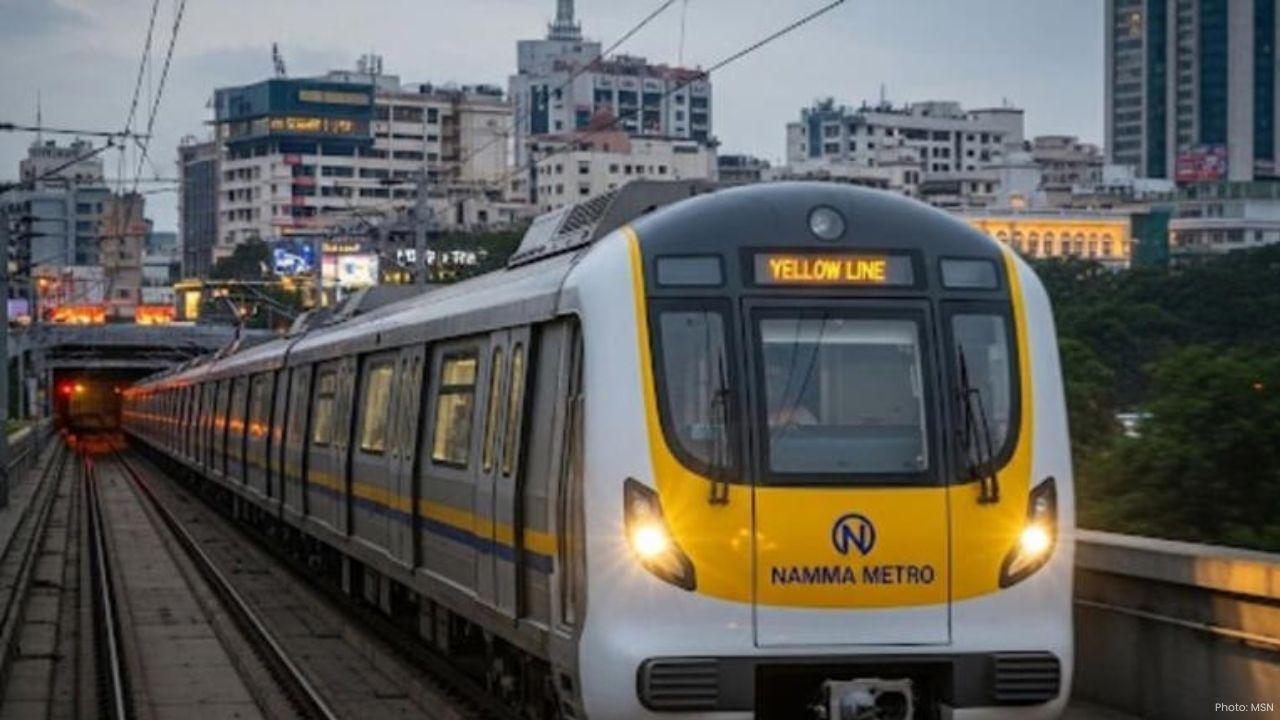
Post by : Meena Rani
Bengaluru’s Namma Metro has steadily emerged as one of India’s most innovative urban transit systems. Despite delays caused by challenging terrain, late coach deliveries, and project setbacks, the Metro has continually pushed the boundaries of urban transport.
From QR-code ticketing to rainwater harvesting, corporate-backed stations, WhatsApp chatbot-based ticketing, and even driverless coaches, Namma Metro is redefining the way a metro system serves a city. Integration with commercial spaces, cultural hubs, and malls further enhances its role beyond a mere transit utility.
QR Codes and Digital Ticketing: Seamless Travel
Bangalore Metro Rail Corporation Limited (BMRCL) has implemented QR-code-based ticketing across 12 digital platforms in collaboration with the Open Network for Digital Commerce (ONDC).
During the Yellow Line inauguration on August 10, 2025, Prime Minister Narendra Modi used the QR code-based ticketing system. Daily commuters now enjoy seamless travel from doorstep to destination using a single app. Self-service kiosks at Byappanahalli metro station further reduce congestion and streamline ticketing.
Rainwater Harvesting: Green Metro Initiative
Namma Metro has embraced eco-friendly practices like rainwater harvesting (RWH). Currently functional at Byappanahalli and Peenya depots, plans are underway to expand RWH across stations.
With Bengaluru facing water shortages and declining groundwater levels, every drop collected along the Metro corridor contributes to groundwater recharge. New depots and Phase 2A and 2B viaducts are planned to integrate recharge wells wherever feasible, making the Metro a city utility contributing to environmental sustainability.
Life-Saving Organ Transport
Namma Metro has pioneered the time-critical transport of human organs. In August 2025, a human liver was transported from Vydehi Hospital to Sparsh Hospital using a combination of ambulance and metro, cutting crucial minutes from peak-hour travel.
On September 11, 2025, a human heart was moved from Yeshwanthpur to South End Circle en route to Apollo Hospital in just 20 minutes across seven stations. Meticulous coordination between hospital teams and Metro security ensured a smooth operation, demonstrating the Metro’s potential beyond conventional commuting.
Corporate-Backed Stations: Innovative Funding
To overcome delays and rising costs, BMRCL adopted corporate funding for station construction.
Mantri Mall Square Station (2014) became India’s first corporate-backed metro station linked to a mall.
Konappana Agrahara Station (2017), funded by Infosys Foundation – ₹200 crore.
Hebbagodi Station (2020), funded by Biocon Foundation – ₹65 crore.
Bommasandra Terminal (2024) funded by Delta Electronics – ₹65 crore.
Companies gain naming rights, advertising, and commercial opportunities, reducing reliance on loans and creating sustainable non-fare revenue streams.
Metro-Cum-Road Corridors: Urban Integration
The Yellow Line introduced Bengaluru’s first double-decker Metro-cum-road corridor between Ragi Gudda and Silk Board, easing traffic at key junctions.
The new Jayadeva Interchange Station, six levels high with 20,000 sqm built-up area, will handle up to 25,000 passengers during peak hours. The integration of Metro tracks with road infrastructure ensures seamless connectivity and urban efficiency.
Smart Maintenance and Digital Monitoring
BMRCL has implemented digital structural monitoring using sensors, AI, and 3D modeling to detect structural weaknesses early. This reduces repair costs, prevents service disruptions, and ensures the long-term safety of metro assets.
Innovative Revenue Models
Full-body ad-wrapped trains on the Purple and Green Lines have become moving advertising platforms, generating non-fare revenue while retaining passenger utility.
Additionally, a WhatsApp chatbot integrated with ONDC platforms allows passengers to recharge travel passes, purchase tickets, check fares, and access timetables, a first in Asia for end-to-end QR ticketing via WhatsApp.
Driverless Coaches: The Next Frontier
Following the Delhi Metro, Namma Metro is set to introduce driverless coaches on the Yellow Line (Electronic City corridor). Titagarh Rail Systems Limited (TRSL) will deliver two trains per month starting in August 2025.
Delays occurred due to land acquisition issues, the COVID-19 pandemic, and supply holdups from CRRC Nanjing. Once operational, driverless trains will enhance efficiency, reduce human resource dependency, and complement innovations like QR-code ticketing, smart monitoring, and full-body ad-wrapped trains.
Corporate-backed metro stations, Metro-cum-road corridor, Smart metro technology, Digital ticketing India










Advances in Aerospace Technology and Commercial Aviation Recovery
Insights into breakthrough aerospace technologies and commercial aviation’s recovery amid 2025 chall

Defense Modernization and Strategic Spending Trends
Explore key trends in global defense modernization and strategic military spending shaping 2025 secu

Tens of Thousands Protest in Serbia on Anniversary of Deadly Roof Collapse
Tens of thousands in Novi Sad mark a year since a deadly station roof collapse that killed 16, prote

Canada PM Carney Apologizes to Trump Over Controversial Reagan Anti-Tariff Ad
Canadian PM Mark Carney apologized to President Trump over an Ontario anti-tariff ad quoting Reagan,

The ad that stirred a hornets nest, and made Canadian PM Carney say sorry to Trump
Canadian PM Mark Carney apologizes to US President Trump after a tariff-related ad causes diplomatic

Bengaluru-Mumbai Superfast Train Approved After 30-Year Wait
Railways approves new superfast train connecting Bengaluru and Mumbai, ending a 30-year demand, easi